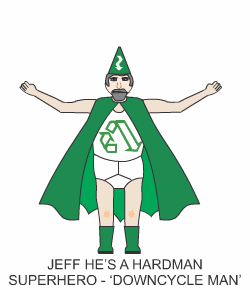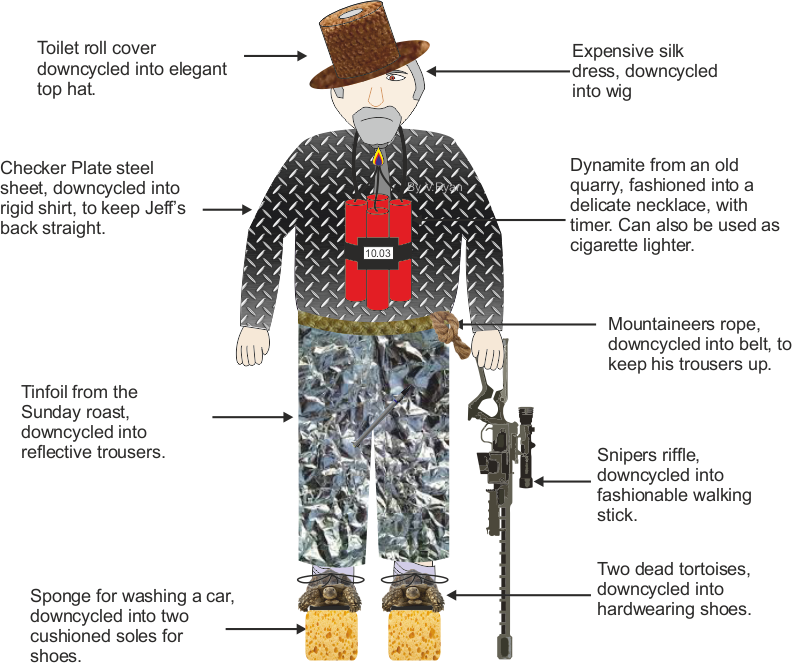| CLICK HERE FOR INDEX PAGE | |
| RECYCLING - DOWNCYCLING | |
| V. Ryan © 2014 | |
| PDF FILE - CLICK HERE FOR PRINTABLE WORKSHEET | |
 |
|
|
Recycling of paper, card, tin cans and household plastic packaging is now
common. People also recycle old, damaged and disused products, ranging
from TVs and computers to furniture. During the recycling and sorting process, products that can be reused, are utilised by people who need them. Some products will be dismantled / disassembled and their component parts recycled for further use. Some products will be crushed and their materials extracted and sent to be recycled into new products. However, recycling often leads to ‘downcycling’. This means that the materials and components that are reclaimed from discarded products, are recycled into lower quality products. |
|
|
Downcycling applies to most plastics. When ‘plastic’ bottles and other
’plastic’ products are collected for recycling, they are frequently
recycled into lower quality products such as doormats. Paper is another example. When paper is recycled and reprocessed, it loses some of its original quality. Recycled writing paper often ends up as lower quality card board and manilla folders. Sometimes recycled writing paper is processed with new paper pulp and then it can be used for writing paper again. Quality writing paper can be downcycled only four / five times. Upcycling is the opposite of downcycling. When a product is upcycled, it’s materials and parts are recycled into higher quality products. This is much less common than downcycling, at it is usually not possible. |
 |
 |
|
| ADVANTAGES OF RECYCLING / DOWNCYCLING | |
| Recycling / downcycling means that we need to process less new raw materials. This saves on energy consumption, as processing can have high energy costs. This also reduces pollution, helping to protect the environment. In social and moral terms, people generally like to support the recycling process, as this helps protect our planet, for generations to come. | |
| DOES RECYCLING ALWAYS LEAD TO DOWNCYCLING/ | |
| Some materials can be continually recycled, without a loss of quality. Glass, steel and PET (Polyethylene terephthalate) are examples. In fact PET bottles can be ‘upcycled’ into higher quality products such as textiles. | |
| JEFF AND PERSONAL DOWNCYCLING | |
| Jeff he’s a hardman, enjoys recycling / downcycling products, so that he can use them again. He lives by the philosophy, ‘everything has its day and then another day’. Jeff he’s a hardman, hates waste and spending money. Recycling / downcycling and saving money go hand in hand. | |
| What do you think of Jeff’s recycling / downcycling efforts? | |
 |
|
| CLICK HERE FOR PRODUCT DESIGN INDEX PAGE | |